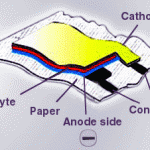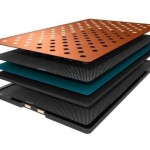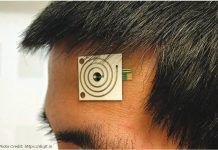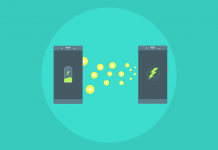 Solid-state lithium-ion battery design by Planar Energy can deliver a three times energy density of today’s lithium-ion batteries at less than half the cost per kilowatt-hour.
Solid-state lithium-ion battery design by Planar Energy can deliver a three times energy density of today’s lithium-ion batteries at less than half the cost per kilowatt-hour.
Its new generation of inorganic solid state electrolyte and electrode materials combined with a proprietary manufacturing process (Streaming Protocol for Electroless Electrochemical Deposition, or SPEED) comprises a materials performance and fabrication breakthrough that overcomes the production and cost barriers to low-cost, solid state, large format batteries.
The key to its high performance is the inorganic nature of the battery, says Mr. Scott Faris, the chief executive officer of Planar Energy. They already have received $4 million in funding from the ARPA-E program, known as Batteries for Electrical Energy Storage in Transportation (BEEST). Performance targets for the BEEST program are to exceed 500 Wh/kg and 500 cycles at commercially viable recharge rates. By 2016, the goal is to produce a cell with 600 Wh/kg and 1,000 cycles. IEEE Spectrum reports that Planar Energy batteries store 400 watt-hours of energy per kilogram
Troy, N.Y. based Paper Battery Co., meanwhile, is making flexible 100-micrometer-thick energy-storage sheets that could be molded onto electronics and medical devices or laminated beneath flexible solar panels. Both Paper Battery and Planar Energy claim they should be able to print meters of batteries at a low cost.
 ReVolt Technology, aims to go to market with an even smaller battery. ReVolt is working on a zinc-air flow “button cell” battery to power hearing aids. The first model will be a primary, or non-rechargeable, battery, but CEO James P. McDougall says it will be followed by a rechargeable version. They are also trying to get 400 Watt hours per kilogram.
ReVolt Technology, aims to go to market with an even smaller battery. ReVolt is working on a zinc-air flow “button cell” battery to power hearing aids. The first model will be a primary, or non-rechargeable, battery, but CEO James P. McDougall says it will be followed by a rechargeable version. They are also trying to get 400 Watt hours per kilogram.
Sion Power uses the well-known high electrochemical potential of lithium and combines it with sulfur to attain superior rechargeable performance. Its Li-S technology provides rechargeable cells with a specific energy of over 350 Wh/kg, which is 50% greater than the currently commercially available rechargeable battery technologies. Over 600 Wh/kg in specific energy and 600 Wh/l in energy density are achievable in the near future. Theoretical specific energy is in excess of 2500 watt hours per kilogram and energy density exceeded 2600 watt hours per liter.
Manufacturing of Li-S cells is no more difficult than manufacturing lithium-ion liquid or lithium-ion polymer cells. The anode and cathode of Li-STM cells are thin materials substantially similar in thickness and tensile strength to those of lithium-ion. Standard lithium-ion winders can be used with little to no modifications. Prismatic and cylindrical form factors can be produced from the same anode and cathode raw materials.
Sion Power believes that by utilizing Li-S technology, a battery pack weighing less than 700 lbs can power a 3,500 lb five-passenger vehicle more than 300 miles. Sion Power also received ARPA-E funding.



